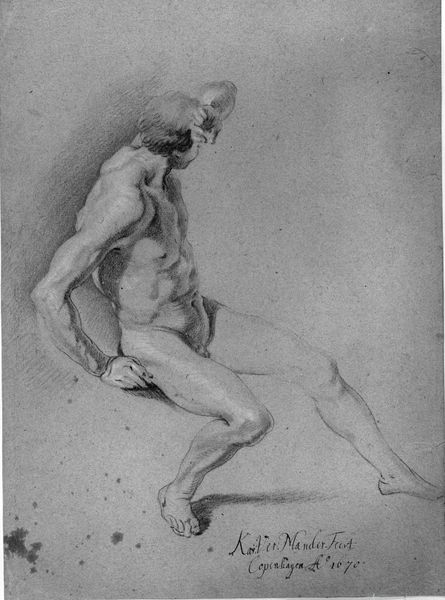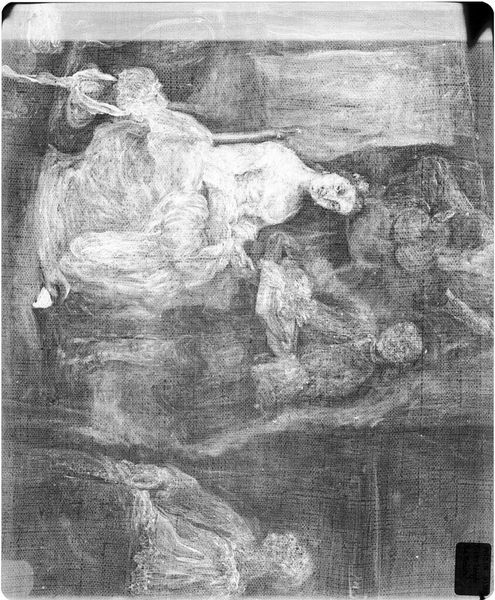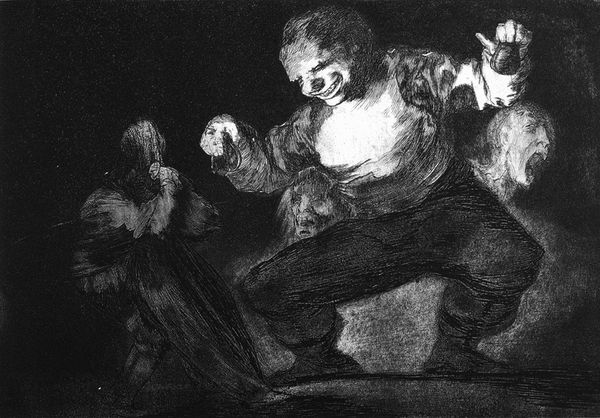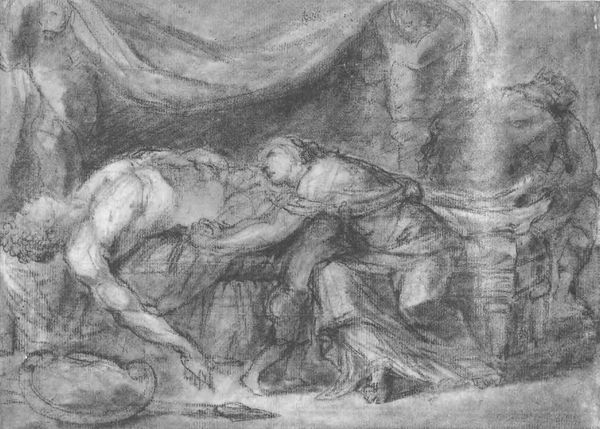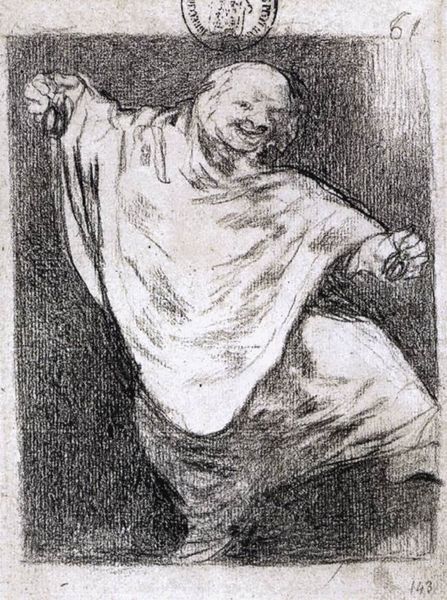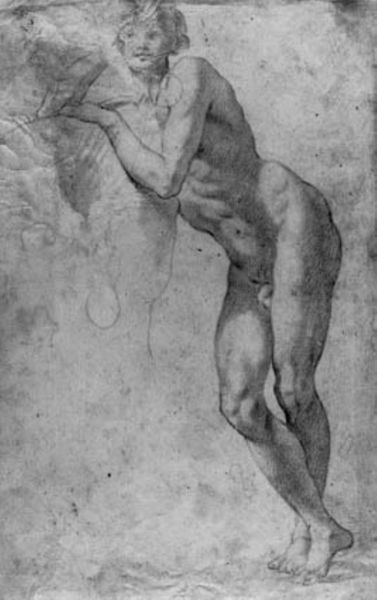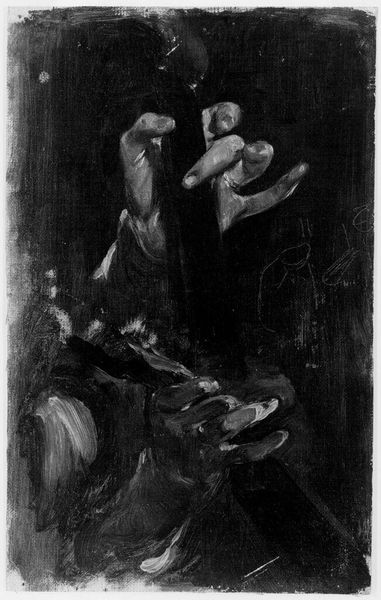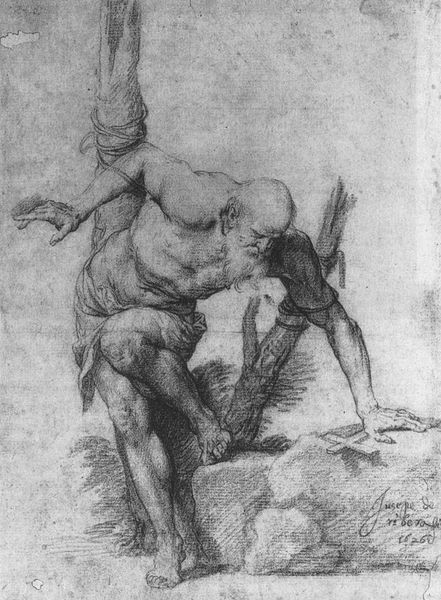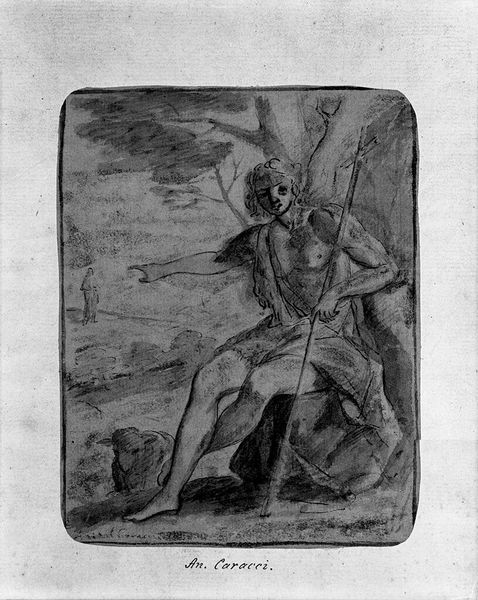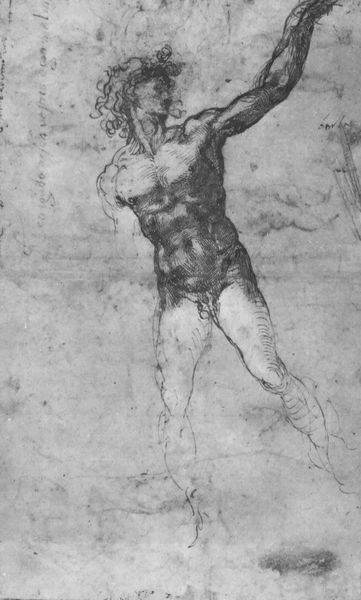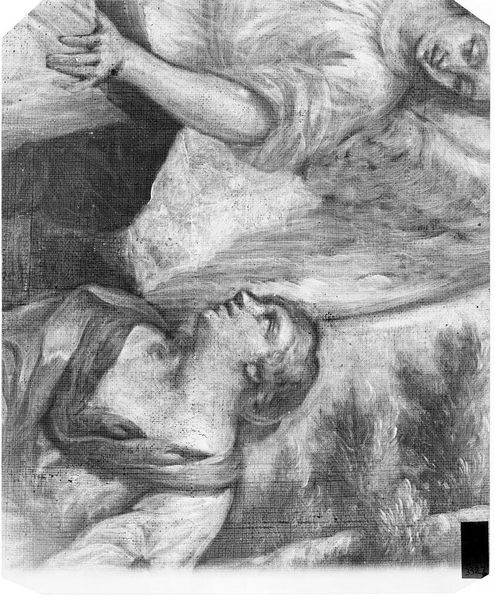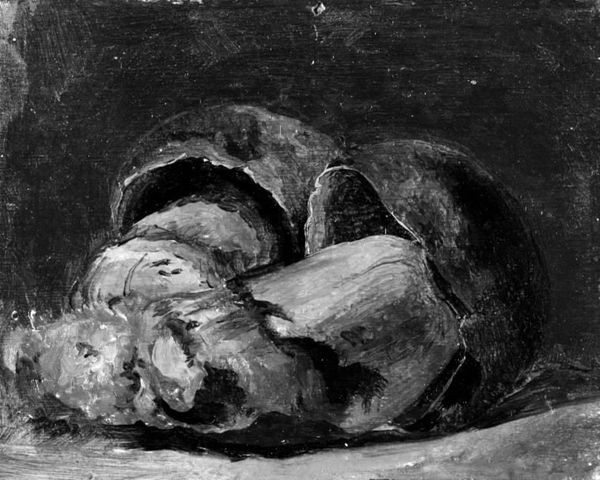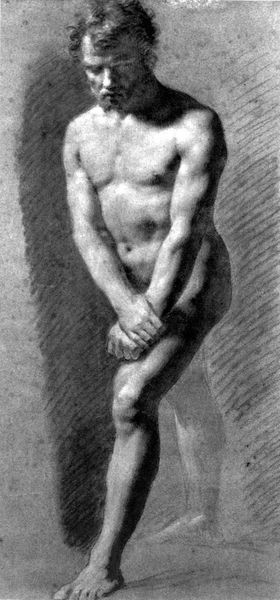
drawing, pencil
#
portrait
#
drawing
#
pencil
#
academic-art
#
realism
Dimensions: 5 3/4 x 4 in. (14.6 x 10.2 cm)
Copyright: Public Domain
Editor: This drawing is John La Farge's "A Brittany Beadle—Sketch from Nature" from 1856. It's made with pencil. It has an overall solemn, reverent tone. What symbols or underlying narratives do you notice in it? Curator: I see the figure kneeling, nearly hunched. What does that posture evoke for you? Think about kneeling throughout history – it's a posture of prayer, submission, and penance. Considering La Farge’s interest in religious themes and the setting of Brittany, it's easy to connect this to religious devotion. Editor: So you think the act of kneeling is a clear religious reference? It could also be exhaustion, given that he's labeled as a beadle. Curator: Possibly both! "Beadle" indicates a church official with ceremonial duties, which creates immediate associations with religion. The image echoes a tradition of representing humble figures or saints in moments of piety, but there is that touch of realism that tempers outright piety, as you point out. Notice the textures rendered in the drawing – do they add symbolic value? Editor: Definitely. The rough pencil strokes give it an unrefined, honest quality. It’s less about idealized reverence, more about observed reality. Maybe a glimpse into the everyday spirituality of ordinary people. Curator: Precisely. And it invites us to consider what that meant in the context of 19th century France, as well as how La Farge’s view of Brittany aligned with his broader artistic goals. This image shows how symbolism shifts based on who interprets it and when, influenced by culture, art history, and personal experiences. What do you think of La Farge's handling of the subject? Editor: I initially saw a depiction of servitude, but now, viewing it through the lens of both faith and social context, the drawing has become far more complex.
Comments
No comments
Be the first to comment and join the conversation on the ultimate creative platform.
